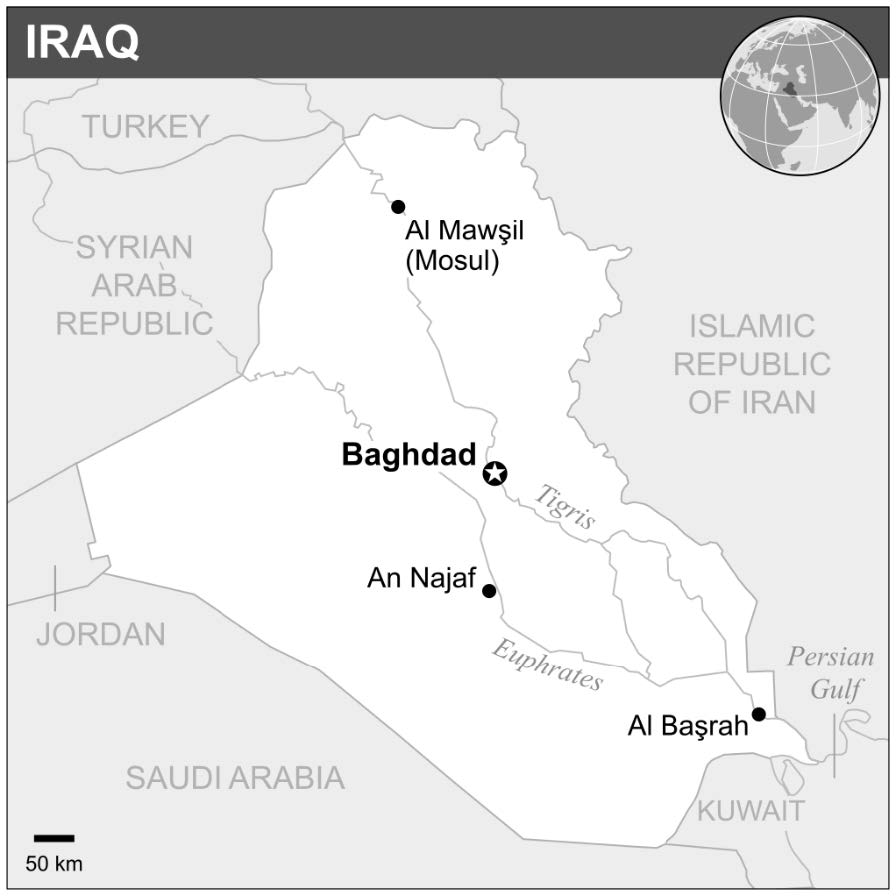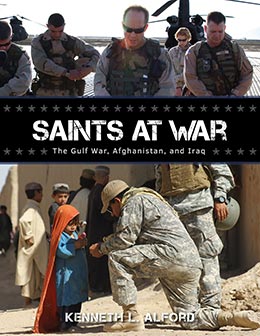Overview
Kenneth L. Alford, “The Iraq War: Overview,” in Saints at War: The Gulf War, Afghanistan, and Iraq (Provo, UT: Religious Studies Center, Brigham Young University; Salt Lake City: Deseret Book), 195.
 National flag of Iraq
National flag of Iraq
In Iraq, Saddam Hussein and his Ba‘ath Party remained in power following the Gulf War. The United States and its allies maintained a military presence in the region in the 1990s, primarily through the establishment of separate no-fly zones in northern and southern Iraq. The United Nations imposed economic sanctions on Iraq during the 1990s. UN weapons inspections also discovered “a variety of proscribed weapons and prohibited technology throughout Iraq. That country’s continued flouting of the UN weapons ban and its repeated interference with the inspections frustrated the international community and led U.S. President Bill Clinton in 1998 to order the bombing of several Iraqi military installations.”[1] In retaliation for the bombing, Iraq refused to let United Nations weapons inspectors return to their country.
 Map of Iraq
Map of Iraq
After the terrorist attacks of 9/
The Coalition quickly achieved the initial objectives of the war—toppling the government of Saddam Hussein and neutralizing the Iraqi military. Allied forces successfully captured Saddam Hussein, and the U.S. began a military occupation of Iraq. The governing authority in Iraq was the Coalition Provisional Authority (CPA), led by a senior American diplomat. One of the first major, and controversial, decisions of the CPA was to disband the Iraqi military. Insurgent attacks by Iraqis (some of them former Iraqi soldiers) and non-Iraqis soon began. By 2006, insurgents were conducting an increasing number of significant terror attacks throughout the country. In January 2007, President Bush accepted the advice of his military commanders and announced he would send an additional twenty thousand American combat troops to Iraq, known as “the Surge.” American forces also convinced Sunni soldiers, who had formerly been fighting guerilla actions against coalition forces, to realign themselves with the Coalition to drive foreign fighters from Iraq. The years 2004 and 2007 were the costliest years of the war in terms of allied casualties.
In November 2008, the Iraqi Parliament redefined the legal framework for American forces in Iraq and set a timetable for a withdrawal of U.S. military forces. The Coalition’s occupation of Iraq ended in December 2011 when the U.S officially declared the completion of its mission in Iraq and removed the last combat brigade from Iraq. Approximately fifty thousand U.S. soldiers remained in Iraq as a transitional force—training Iraqi forces and conducting nation-building operations. The Iraq War, Operation Iraqi Freedom, remains a notably controversial conflict. (See the Iraq timeline in this volume for additional details regarding this conflict.)
Notes
[1] Encyclopedia Britannica Online, s.v. “Iraq War,” britannica.com/
